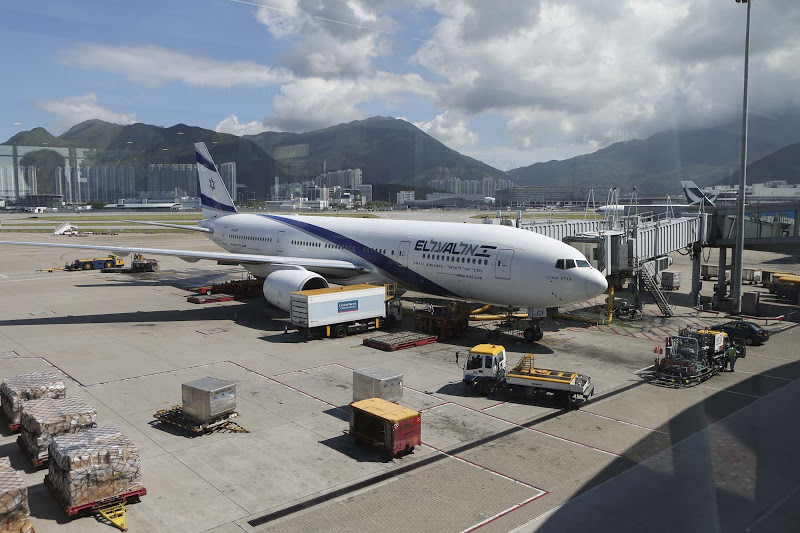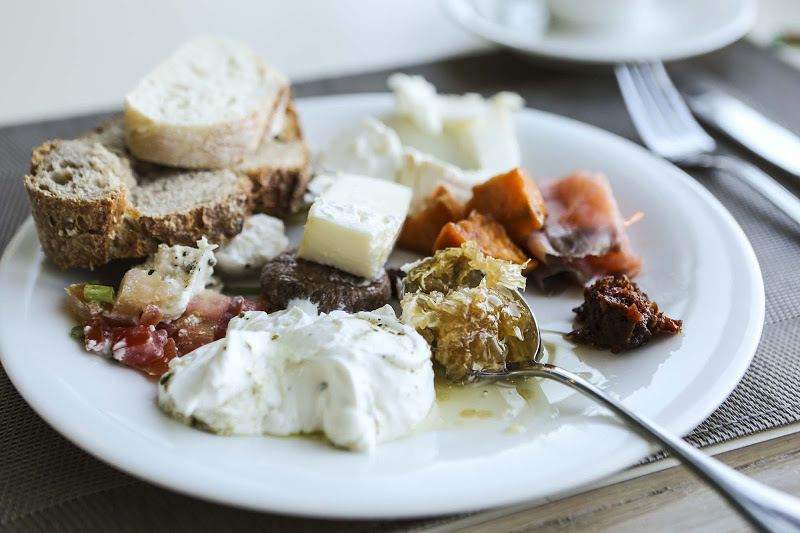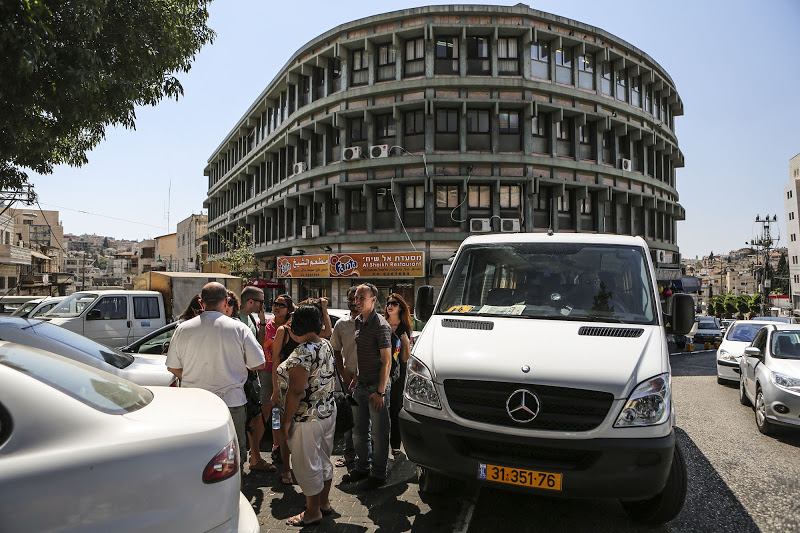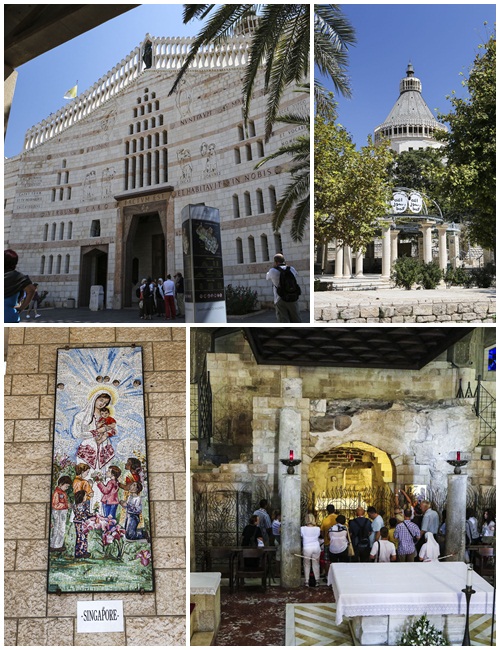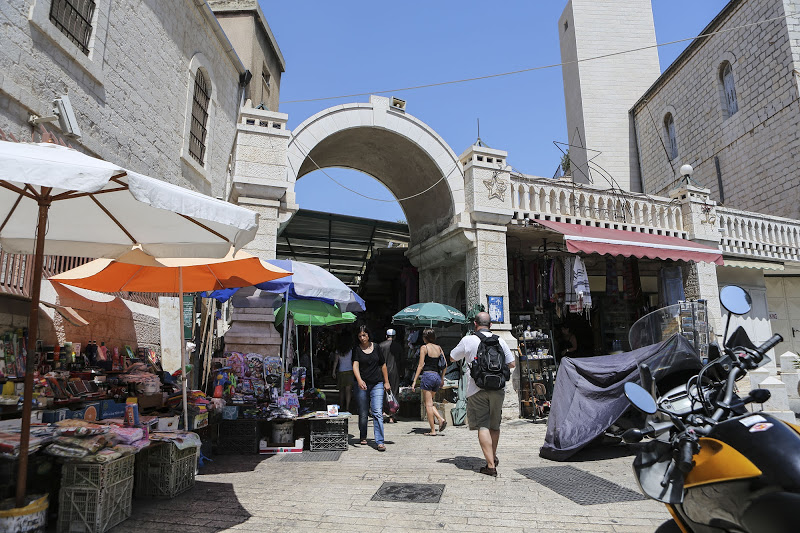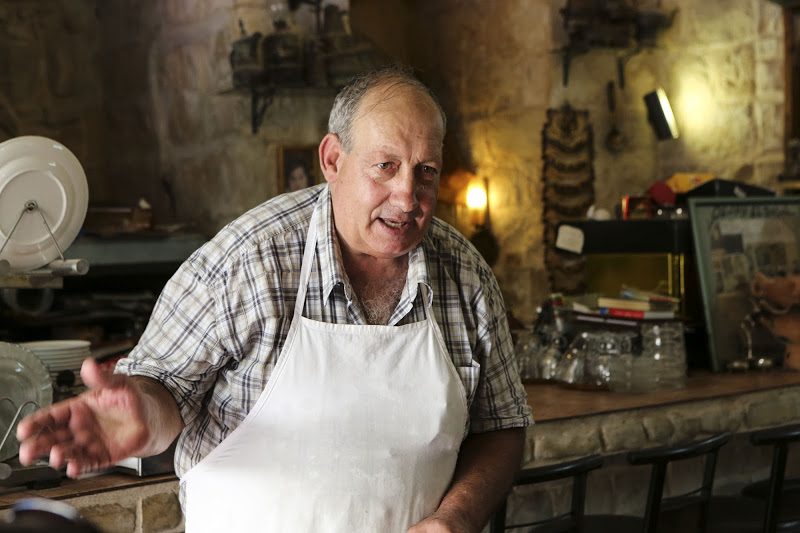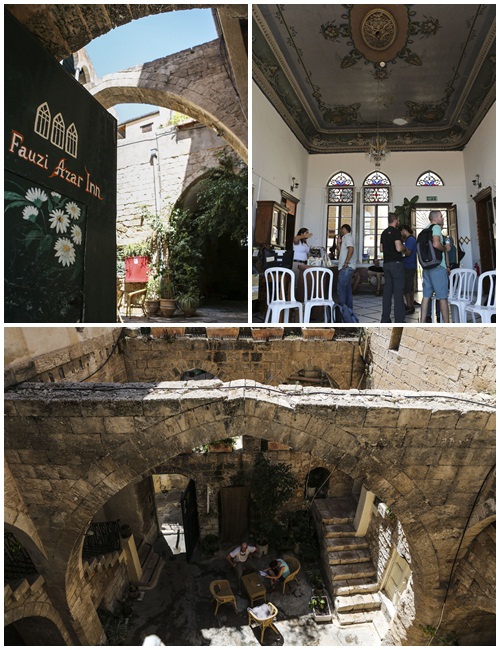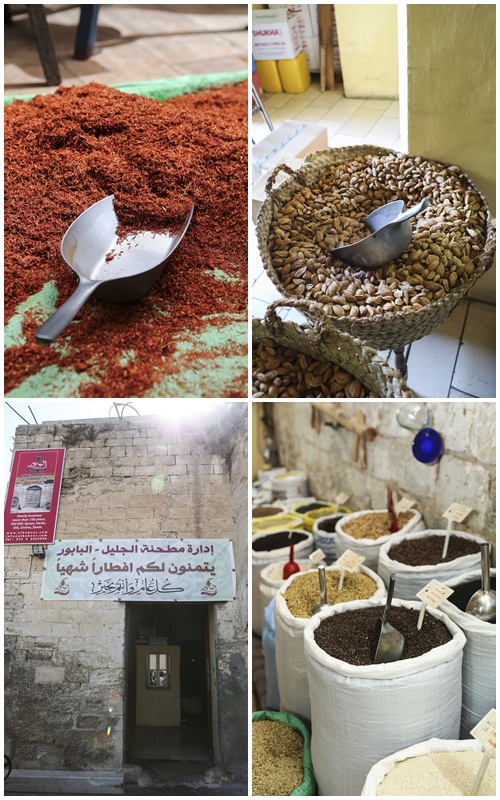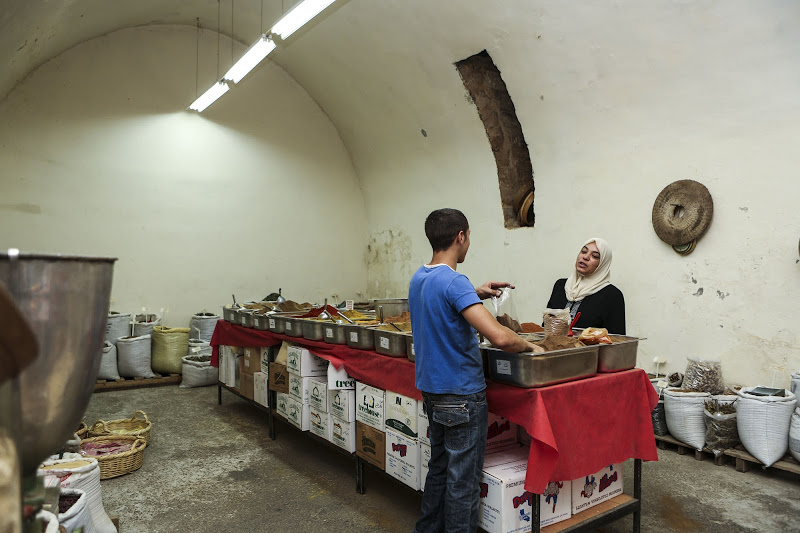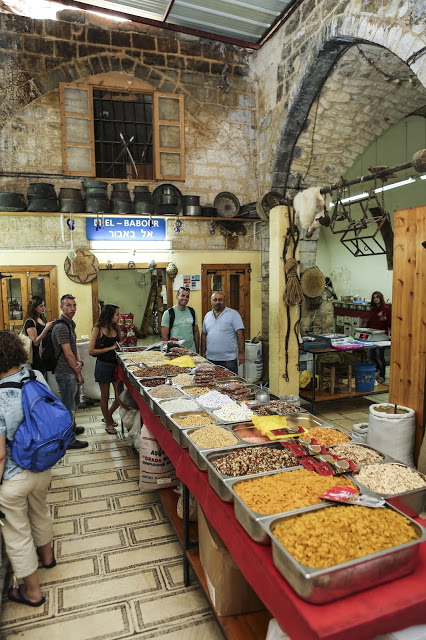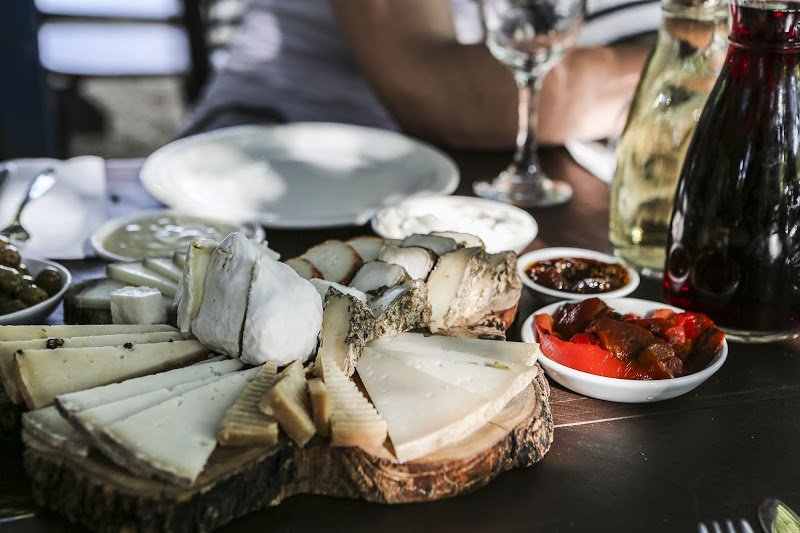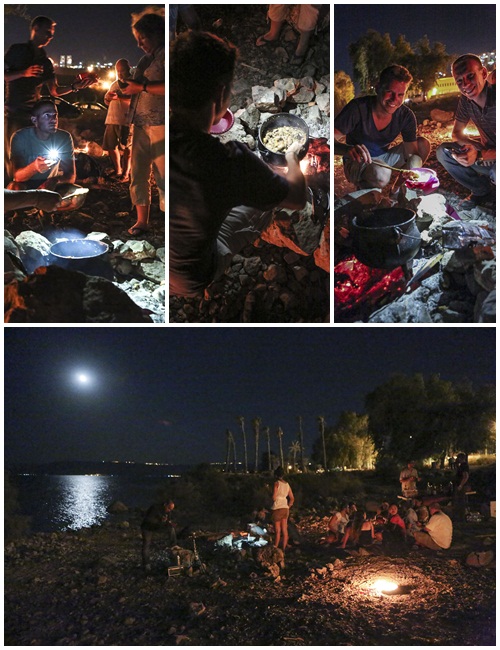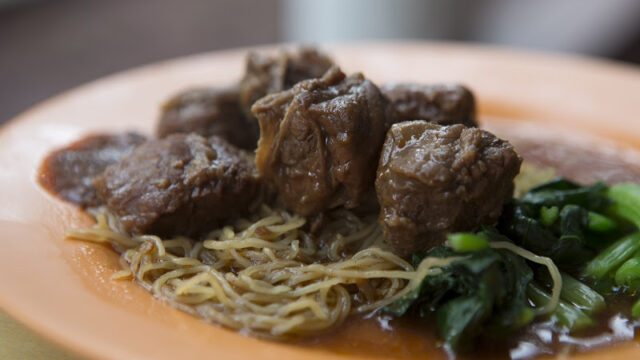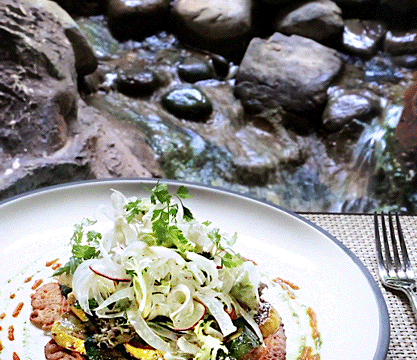I have been wanting to visit Israel for the longest time.
Growing up in St Andrew’s School meant that I have been hearing about stories from the land of the Bible since primary one and I knew that one day I shall have to visit the places which I have read so much about — Bethlehem, Nazareth, Jerusalem, the Sea of Galilee — and visit that “green hill far away” which we sing every Easter from my little red Hymnbook, “The Saints Sing” which my son now sings from too. (It’s one of the few things in Singapore which hasn’t changed for years!)
So, I have always known that one day I shall make my pilgrimage to the Holy Land, but it came as a big surprise when I received an email one day inquiring if I would be interested to visit Israel as part of a food trip!
Food Trip to Israel? Hmmm…. I go to Italy to eat pizza, Spain for Jamon, Thailand for Som Tam, Hong Kong for Wanton Mee. What do they eat in Israel? The only Jewish food that I know of is the bread and wine which I take for communion every Sunday but that has evolved quite a bit from the original passover meal 2000 years ago. So what exactly is Israeli cuisine?
Now, if you have never been to Israel before, just let me say that your adventure starts right at the airport. There are no direct flights to Israel from Singapore, so you have to transfer either in Hong Kong or Bangkok which is where I got my first brush with Israeli security.
The Israeli security really do take their job very seriously. I was quizzed for at least 10 minutes about why I was visiting Israel.
Security: “What is your purpose for visiting Israel?”
Me: “I have been invited to go there to write about your food!”
Security: “Why?”
Me: “So that I can publish it on my blog and share your wonderful culinary heritage with the world!”
Security: “Who invited you?”
Me: “A group called Taste of Israel”
Security: “Do you know them?”
Me: “Er… no”
Security: “Have you met them?”
Me: “Er….no”
Security: “How did they contact you then?”
Me: “Er… they wrote me an email….”
Security: “Have they asked you to bring a package to Israel for them?” (Something perhaps that goes tick tick tick?)
I guess you can see why I had so much trouble with security!
Anyway, to cut a long story shorter (cos this is a long long story), I managed to get to Tel Aviv finally after 19 hours of travelling, having every item in my bag checked, two rounds of interrogations and body checks that were just short of a strip search (I exaggerate…. a little). Things started to get better by the time I checked into the beautiful seaside hotel of Herods Tel Aviv. It was already past midnight but I was pleasantly surprised when the counter staff told me that they have upgraded me to a junior suite! It would have been great but for the fact that I had to get up early the next morning to start my food tour!
Right after my first encounter with an Israeli breakfast (tell you more about these later), I got to meet with my hosts and the other bloggers viz Joelen (whatscookinchicago.com), Carey (seriouseats.com), Parco (www.lazyblog.net), Amy (www.cookingwithamy.com) and surprise surprise, another Singaporean named Zing who was traveling through the Middle East and decided to join us for the trip.
Our first stop would be Nazareth, a small little township in the Galilee that would otherwise be as well known as Ang Mo Kio on the world map except for the fact that just happened to be the hometown of one of history’s most well known figures — Jesus of Nazareth. First stop was a visit to the Basilica of the Annunciation before morning tea.
The Basilica was built over a stone house which was believed to be Mary’s (mother of Jesus) residence. This was were she was visited by the Angel Gabriel who appeared to her to announce that she was to give birth to a very special baby who would be the saviour of the world. The current church building was built in 1969 over the previous churches built during the Crusader and Byzantine era. It is said that between 324-326 AD, Saint Helena, the mother of the first Roman Catholic Emperor Constantine visited the Holy Land and identified this as the site of Mary’s house.
After our tour of the Basilica, we were immediately whisked away to the market which was known in Israel as “Souqs”. This would be the first of five markets that we will be visiting over the next four days.
The market has just been renovated in the year 2000 so it was relatively new. I say “relatively” because if this was in Singapore, it might already be slated for the next renovation. But when you consider that this old market has been around for hundreds or even thousands of years, then 12 years is very new!

Katayefs at Dewan Alsaraya restaurant
We quickly worked our way through the market to the Dewan Alsaraya restaurant (we were hungry!) where we were introduced to a very special treat in the form of a Katayef. Now, I got to admit that when I first saw it, the very first thought that went through my mind was how much they looked like McDonald’s hotcakes. The big difference is that these pancakes were only cooked on one side, much like our Mee Jiam Kueh and they would eventually be stuffed with cheese or walnuts and fried before being drenched in syrup.
Katayefs are like Bak Changs (Rice Dumplings) in the sense that they are actually foods that used to be served only during festivals (in this case, Ramadan) but got so popular that some people have decided to make them all year round. The thousands of Katayef produced everyday at the stall are the work of just one man, the eccentric Abu Ashraf who loves his job so much that he works every day and prays that he would be in the middle of making Katayefs when he is finally called to eternity.
I am not sure if the tour guides usually bring their tour groups to this place, but if they don’t, make sure you detour to visit this place for a Katayef and a shot of coffee laced with cardamom. This place is an institution aside from being an excellent stop for a morning snack while you soak in the ancient atmosphere of the shop itself.
Deewan Alsaraya: White Mosque Yard, Old City Market
Right after the Katayef, we were introduced to the one dish which would occupy our discussions for the next few days — hummus. Hummus is essentially boiled chickpeas which have been mashed and then mixed with Tahina (sesame paste), lemon juice and garlic. It seems that hummus is so popular in Israel that they can eat this stuff almost every day.
Now, I have eaten hummus on many occasions while living in Australia and have always associated it with Turkish and Lebanese cuisines. Indeed hummus is a well known Arabic dish that is usually eaten with pita bread which can trace its origins back to ancient Egypt. As with a lot of other dishes which we will be introduced to in the next few days, it would seem that most of the dishes in Israel have been adapted from other cuisines. The fact that the Jews have been living around the area for over three thousand years just means that their dishes would necessarily be using the same ingredients as most of the other countries around the middle east. Over the next few days, we were to be introduced to other foods which have been brought back by Jews from all parts of the world as they returned to Israel after being dispersed following the destruction the Jewish Temple in 70 AD.
Our guide then whisked us away from the hustle and bustle of the busy streets into the quaint 200 year old Fauzi Azar Inn which is a popular place for visitors stay in Nazareth. It is located smack in the middle of the well known sights and many choose to use this place as their base camp as they embark on the 65km “Jesus Trail” from Nazareth to Capernaum.
Here’s an excellent article in the New York Times about the Jesus Trail.
After a brief stopover at the Inn to admire the hand painted ceilings, and to enjoy yet another cup of Turkish coffee, we made our way to the Galilee Mills aka El Babour. It was nicknamed El Babour because in the old days, the mills used to be run by steam and that created lots of “vapour” which the Arabs pronounced as “Babour”. Now this is the kind of place which would get all you spice girls (ok ok and spice guys) excited because it is reputed to sell over 1000 different spices, a lot of it is still being milled by their 100 year old machine.
I was not so much into the spices as I was with a little slit in the wall in one of the rooms. According to the owner, this room used to be walled up and acted as a silo for grain. In the days before motorized vehicles, camels carrying grain used to offload their cargo just outside the silo and the grain would be poured through the little slit on the wall!
The number of spices were bewildering but I managed to bring home a few packets of Shawarma spice mix which turned out to be an excellent rub for roast chicken!
Right after El Babour, we hopped on the bus and headed eastward towards city of Tiberius which was the largest city located by the Sea of Galilee. Along the way, we stopped at the Ein Kamonim Goat farm to meet with the largest herd of Alpine goats in Israel. Here is where some of the best goat cheeses in the country are made.
White cheeses are very popular in Israel and feature prominently in their dishes. It is especially noticeable during breakfast where it is quite normal to find at least 6 different kinds of fresh white cheeses. Part of the reason for this is that Jewish Kosher rules state that meat cannot be eaten together with dairy. So you either eat meat or cheese but a Super Supreme Pizza is a no no. As such, dairy foods such as milk and cheese are very important in Israel and their dairy industry are reputed to have the hightest yielding dairy cows in the world.
It was interesting to note that their best cheeses are made with milk from goats which are herded by shepherds everyday to feed out in the wilderness and only return back to the shed in the evenings. Around one third of all their goats are treated this way and the cheese they produce is exceptional.
You can read more about Ein Kamonim here.
After a long day, we eventually made it to the shores of the Sea of Galilee which technically is not a “Sea” but a freshwater lake. This place is very significant for me personally as many of the events of the bible happened right here. It was around the northern part of the Sea of Galilee that Jesus found his first disciples who were happened to be fishermen. In primary school, we used to sing “I will make you fishers of men….” Now, I was able to dip my feet into the very waters that I was singing about almost forty years ago!
When we Singaporeans get together at the beach, we usually do a BBQ with chicken wings and sausages. In Israel, they do a poyke which is essentially a big cast iron pot (South African in origin) where everyone just brings something and throws it in! I was told, this could be anything including yesterdays leftovers. Yes, I know what you are thinking, but it actually tasted pretty good!
I will leave you with this excellent video which I used to watch again and again before I even knew that I was going to do this trip. Standing by the shores of the Sea of Galilee with the full moon casting its light upon its serene waters, I felt somewhat at peace as I place another tick on the places I wanted to visit before I die. It’s been a tiring day and I know I will be sleeping well that night for tomorrow, we head for Jerusalem!
Read Part 2, Part 3 and Part 4 of my Israel Food Trip.
This trip was sponsored by Taste of Israel



